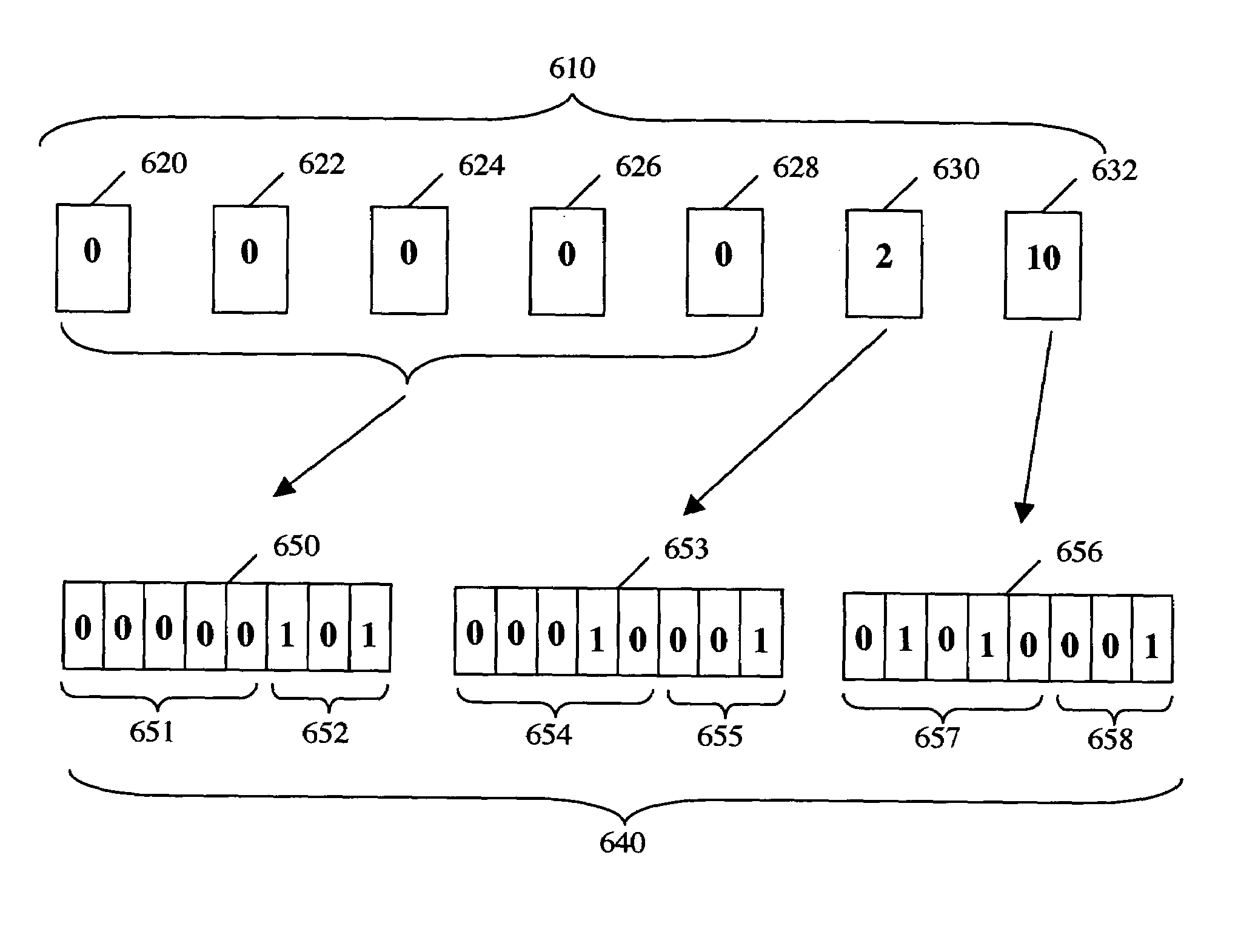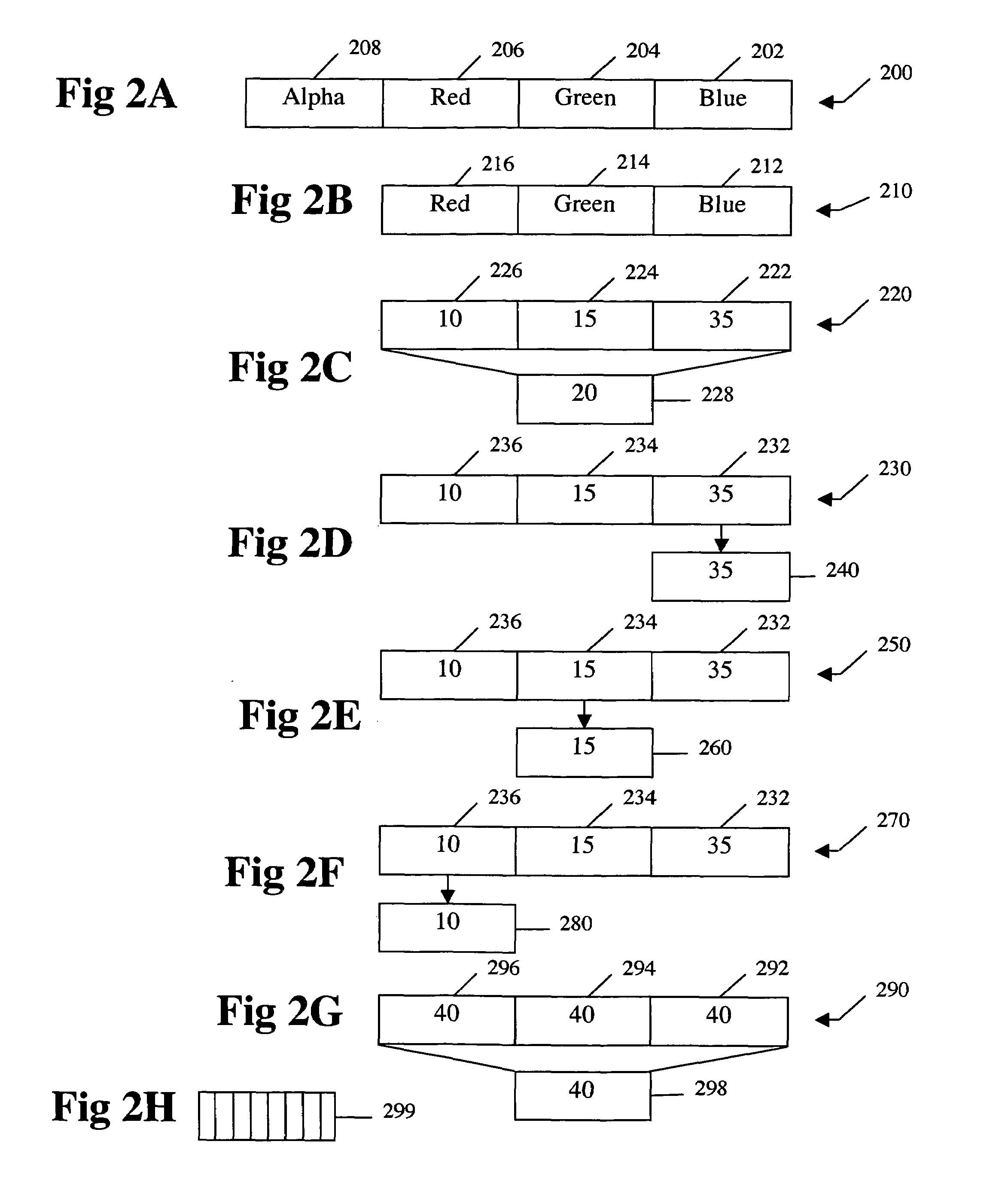Variable general purpose compression for video images (ZLN)
a video image and general purpose technology, applied in the field of data compression, can solve the problems of noise and artificial spikes in the signal, the transmission of video signals with the full resolution and quality of televisions is still out of reach, and the quality of televisions is not acceptable, so as to achieve the effect of more loss and higher compression ratio
- Summary
- Abstract
- Description
- Claims
- Application Information
AI Technical Summary
Benefits of technology
Problems solved by technology
Method used
Image
Examples
Embodiment Construction
FIG. 1—Compression and Decompression Steps
[0070]FIG. 1 illustrates a sequence of compression steps 100 and a sequence of decompression steps 150 of the present invention. The compression steps 100 comprise a sub-sampling step 110 and an encoding step 130. After completion of the compression steps 100, a stream of encoded data 140 is output to either a storage medium or a transmission channel. The decompression steps 150 comprise a decoding step 160 wherein the stream of encoded data 140 is processed and an image reconstitution step 180.
FIGS. 2A to 2H Selecting Pixel Values for Encoding
[0071]FIGS. 2A to 2G illustrate alternatives for selecting a pixel value for encoding. The sub-sampling step 110 (FIG. 1) includes sub-sampling of a pixel value to obtain a variable selected number of bits.
[0072]Video digitizing hardware typical has the options of storing the pixel values as a 32 bit pixel value 200 or a 24 bit pixel value 210, shown in FIG. 2A and FIG. 2B, respectively. The 32 bit pix...
PUM
 Login to View More
Login to View More Abstract
Description
Claims
Application Information
 Login to View More
Login to View More - R&D
- Intellectual Property
- Life Sciences
- Materials
- Tech Scout
- Unparalleled Data Quality
- Higher Quality Content
- 60% Fewer Hallucinations
Browse by: Latest US Patents, China's latest patents, Technical Efficacy Thesaurus, Application Domain, Technology Topic, Popular Technical Reports.
© 2025 PatSnap. All rights reserved.Legal|Privacy policy|Modern Slavery Act Transparency Statement|Sitemap|About US| Contact US: help@patsnap.com



